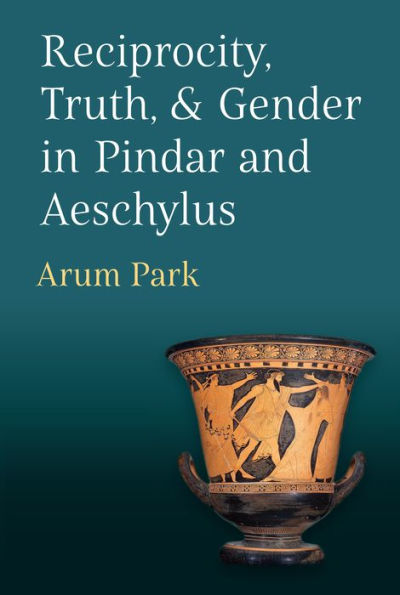In Reciprocity, Truth, and Gender in Pindar and Aeschylus, author Arum Park explores two notoriously difficult ancient Greek poets and seeks to articulate the complex relationship between them. Although Pindar and Aeschylus were contemporaries, previous scholarship has often treated them as representatives of contrasting worldviews. Park’s comparative study offers the alternative perspective of understanding them as complements instead. By examining these poets together through the concepts of reciprocity, truth, and gender, this book establishes a relationship between Pindar and Aeschylus that challenges previous conceptions of their dissimilarity. The book accomplishes three aims: first, it shows that Pindar and Aeschylus frame their poetry using similar principles of reciprocity; second, it demonstrates that each poet depicts truth in a way that is specific to those reciprocity principles; and finally, it illustrates how their depictions of gender are shaped by this intertwining of truth and reciprocity. By demonstrating their complementarity, the book situates Pindar and Aeschylus in the same poetic ecosystem, which has implications for how we understand ancient Greek poetry more broadly: using Pindar and Aeschylus as case studies, the book provides a window into their dynamic and interactive poetic world, a world in which ostensibly dissimilar poets and genres actually have much more in common than we might think.
In Reciprocity, Truth, and Gender in Pindar and Aeschylus, author Arum Park explores two notoriously difficult ancient Greek poets and seeks to articulate the complex relationship between them. Although Pindar and Aeschylus were contemporaries, previous scholarship has often treated them as representatives of contrasting worldviews. Park’s comparative study offers the alternative perspective of understanding them as complements instead. By examining these poets together through the concepts of reciprocity, truth, and gender, this book establishes a relationship between Pindar and Aeschylus that challenges previous conceptions of their dissimilarity. The book accomplishes three aims: first, it shows that Pindar and Aeschylus frame their poetry using similar principles of reciprocity; second, it demonstrates that each poet depicts truth in a way that is specific to those reciprocity principles; and finally, it illustrates how their depictions of gender are shaped by this intertwining of truth and reciprocity. By demonstrating their complementarity, the book situates Pindar and Aeschylus in the same poetic ecosystem, which has implications for how we understand ancient Greek poetry more broadly: using Pindar and Aeschylus as case studies, the book provides a window into their dynamic and interactive poetic world, a world in which ostensibly dissimilar poets and genres actually have much more in common than we might think.

Reciprocity, Truth, and Gender in Pindar and Aeschylus
254
Reciprocity, Truth, and Gender in Pindar and Aeschylus
254
Product Details
| ISBN-13: | 9780472903863 |
|---|---|
| Publisher: | University of Michigan Press |
| Publication date: | 05/22/2023 |
| Sold by: | Barnes & Noble |
| Format: | eBook |
| Pages: | 254 |
| File size: | 1 MB |
